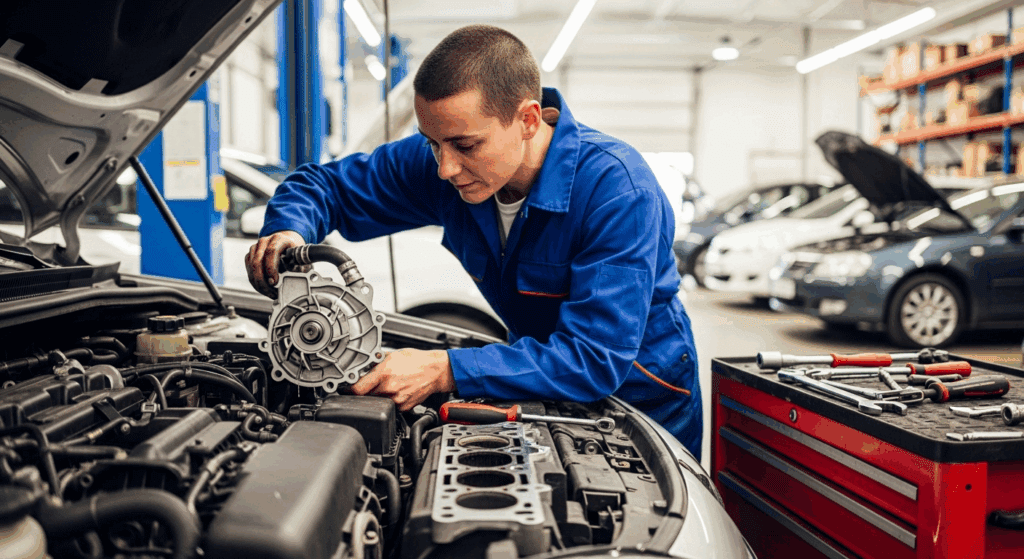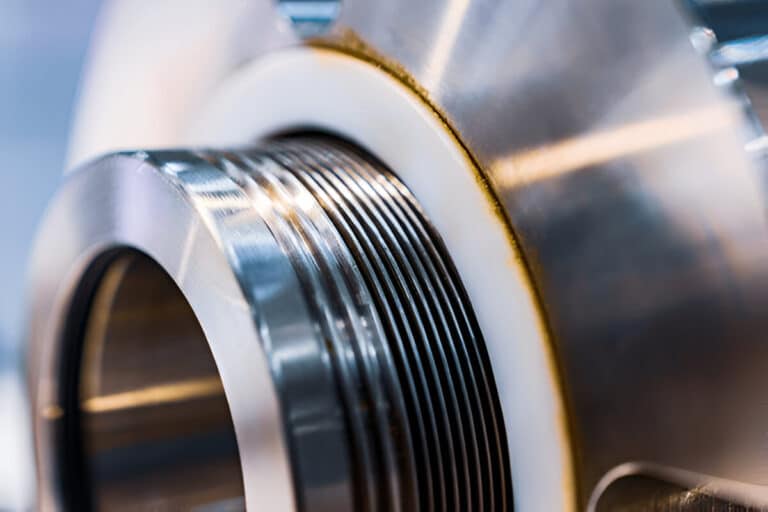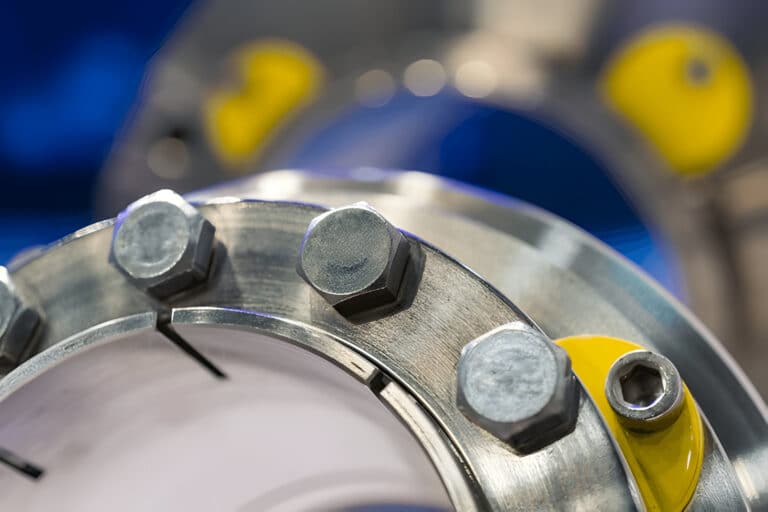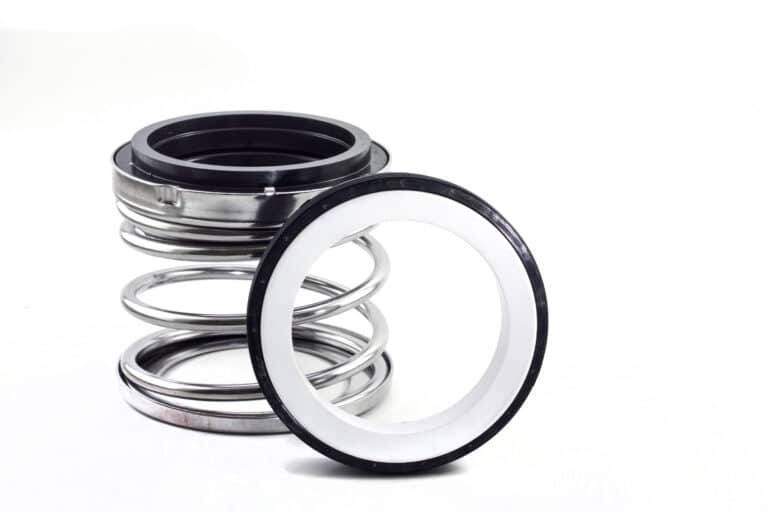With a very minor leak, you might be able to drive 20-50 miles to reach a repair shop, but only under ideal conditions. This means cool weather, highway driving (not stop-and-go traffic), and constantly monitoring your temperature gauge.
The real answer is: don’t risk it unless it’s a true emergency. Even professional mechanics avoid driving cars with known water pump issues because the risk of catastrophic damage is too high.
If you absolutely must drive, follow this rule: the moment your temperature gauge moves above normal, stop immediately. Don’t wait for it to reach the red zone—by then, damage is already occurring.

Assessing the Leak’s Severity
Slow Seep / Minor Leak
A slow seep looks like a small wet spot or dried coolant residue around the water pump area. You might notice a few drops of coolant under your car after it’s been parked overnight, or you’ll see your coolant level dropping slowly over several days or weeks.
With this type of leak, your car might still function normally for a while. The cooling system can temporarily compensate for the small coolant loss, especially if you keep topping it off.
Active Leak (Drip or Stream)
An active leak means you can see coolant actively dripping or streaming from the water pump while the engine is running. You’ll notice puddles forming quickly under your car, and your coolant reservoir will empty fast—sometimes within minutes.
This is an emergency situation. Your engine will overheat within minutes to an hour of driving, depending on the leak’s severity and your driving conditions.
If you see steam coming from under the hood or your temperature gauge climbing into the red zone, pull over immediately. Continuing to drive will destroy your engine.
Risks of Driving with a Leaking Water Pump
Here are the major dangers you face when driving with a compromised water pump:
1. Engine Overheating
Your engine generates extreme heat—enough to melt metal parts if not properly cooled. Without sufficient coolant circulating through the system, your engine temperature will spike rapidly, causing the metal components to expand beyond their design limits.
2. Complete Engine Failure
When your engine overheats severely, the cylinder heads can warp and the head gasket can blow. This means coolant and oil start mixing, creating a milky sludge that destroys your engine from the inside.
3. Sudden Breakdown
A water pump can fail completely without warning, especially if it’s already leaking. When it stops working entirely, your engine will overheat within minutes, forcing you to pull over.
4. Damage to Other Components
Overheating doesn’t just hurt your engine. It can damage your radiator, thermostat, hoses, and even your transmission if it shares cooling with the engine.
5. Loss of Coolant / No Heat
As coolant leaks out, you’ll lose cabin heat in winter. More importantly, once the coolant level drops below the pump’s intake, it can’t circulate anything—even if the pump is still working. Your engine will overheat almost instantly at this point.
Emergency Tips for a Leaking Pump
If you’re caught in an emergency and must drive a short distance with a leaking water pump, follow these critical steps:
1. Keep the Drive as Short as Possible
Only drive to the nearest safe location or repair shop. This isn’t the time for errands or detours—every mile increases your risk exponentially.
2. Drive Gently and in Cool Conditions
Avoid aggressive acceleration or high speeds. Drive during cooler parts of the day (early morning or evening) when your engine doesn’t have to work as hard against ambient heat.
3. Carry Extra Coolant and Check Levels
Keep several gallons of coolant or distilled water in your trunk. Stop every few miles to check the coolant level and top it off if needed. Never open the radiator cap when the engine is hot—you’ll get sprayed with boiling coolant.
4. No Idling, No Traffic Jams
Avoid any situation where you’ll be sitting still with the engine running. Your car needs airflow through the radiator to help with cooling. If you hit traffic, turn off the engine whenever possible or take an alternate route.
When to Seek Immediate Repair
Get your water pump fixed immediately if you notice any of these warning signs:
- Temperature gauge running high: Your temperature gauge consistently runs higher than normal, even if it’s not in the red zone yet. This means your cooling system is struggling.
- Visible coolant leak: You see any visible coolant leak, regardless of size. Remember, leaks only get worse—they never fix themselves.
- Whining or grinding noise: You hear a whining or grinding noise from the front of your engine. This often means the water pump bearing is failing, and complete failure could happen at any moment.
- Frequent coolant refills: Your coolant needs frequent topping off. If you’re adding coolant more than once a month, you have a problem that needs immediate attention.
FAQs
What does a water pump leak look like?
A water pump leak appears as green, orange, or pink fluid (depending on your coolant type) pooling under the front-middle area of your car. You might also see dried, crusty coolant residue around the pump itself or smell a sweet, syrupy odor.
How much does it cost to replace a water pump?
Water pump replacement typically costs between $300-$800, depending on your vehicle. The part itself costs $50-$200, but labor is expensive because mechanics often need to remove multiple components to access the pump.
Can a water pump leak fix itself?
No, a water pump leak will never fix itself and will only get worse over time. The seal or gasket causing the leak will continue to deteriorate, eventually leading to complete pump failure.
Will Stop Leak products fix a water pump leak?
Stop leak products might temporarily slow a minor leak, but they’re not a real solution for water pump problems. They can also clog your radiator and heater core, creating bigger problems. Always opt for proper repair instead.
Can I just add water instead of coolant?
In an emergency, you can use distilled water temporarily. However, water alone doesn’t prevent corrosion or provide freeze protection. It also boils at a lower temperature than proper coolant, making overheating more likely.




